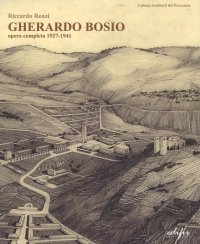Gio. Benedetto Castiglione Genovese. Il Grechetto a Roma. Committenza e opere
A cura di Orlando Anna e Francesco Rotatori.
Genova, 2023; br., pp. 304, ill. col., cm 23x29.
prezzo di copertina: € 150.00
|
Libri compresi nell'offerta:
Gio. Benedetto Castiglione Genovese. Il Grechetto a Roma. Committenza e opere
A cura di Orlando Anna e Francesco Rotatori.
Genova, 2023; br., pp. 304, ill. col., cm 23x29.
OMAGGIO (prezzo di copertina: € 150.00)
Giovan Antonio Dosio Da San Gimignano Architetto e Scultor Fiorentino tra Roma, Firenze e Napoli
A cura di Emanuele Barletti.
Fotografie di BACHerin Paolo e Saverio De Meo.
Prima edizione 2011.
Firenze, 2011; ril., pp. 844, ill. b/n e col., tavv., cm 24x28,5.
OMAGGIO (prezzo di copertina: € 98.00)
Vincenzo Meucci
Co-Editore: Cassa di Risparmio di Firenze.
Firenze, 2015; cartonato, pp. 304, ill. col., cm 25x29,5.
(Arte).
OMAGGIO (prezzo di copertina: € 50.00)
Gherardo Bosio. Opera Completa 1927-1941
Firenze, 2016; br., pp. 368, ill. b/n e col., cm 23x28.
(Architetti del Novecento. Storia e archivi).
OMAGGIO (prezzo di copertina: € 60.00)
Stained Glass before 1700 in the Collections of the Los Angeles County Museum of Art and the J. Paul Getty Museum
Virginia C. Raguin
Harvey Miller Publishers
Testo Inglese.
London, 2022; 2 voll., ril., pp. 508, 89 ill. b/n, 420 ill. col., cm 23x31.
(Corpus Vitrearum Usa. 10).
collana: Corpus Vitrearum Usa.
ISBN: 1-912554-71-2 - EAN13: 9781912554713
Soggetto: Arte Vetraria,Collezioni
Periodo: 1400-1800 (XV-XVIII) Rinascimento
Testo in: 
Peso: 1 kg

Incantevole Puglia. Fra arte, storia e natura. [Edizione Italiana e Inglese]

La Scuola di Posillipo. La Natura, il Paesaggio e il Plein Air
Cancellara nella storia, nelle tradizioni e nell'arte. Vol III
La Dimora di Penelope. Itaca: appunti di una storia archeologica










